
“…and if I hire a car I could make it to the disused mercury mine!” little did I know that this ‘obscure’ holiday destination that I was trumpeting in the pub would prove to be such a rewarding target.
I drove to this site fresh from landing at Trieste airport, initially just assuming I would be getting in a pre-emptive tick on a site that was soon to be inscribed on the World Heritage list and little else. It actually turned out to be an exceptionally rewarding way to start my holiday in this great little corner of Europe.
Idrija is situated in a wonderfully verdant valley and the road through it was a pleasure to drive. When I arrived at the town I was suitably impressed. Rather than being the slightly utilitarian mining landscape I was expecting it was actually a rather pretty Central European renaissance town. There were lovely winding streets, trickling streams, a little white church nestled above the town and an imposing arcaded castle housing the wonderful town museum.
I arrived just too late for a tour of the mine shafts, so headed for the museum which was exceptionally well presented, and the staff were superb. They gave me an introduction to the life of the town, its heritage and its highlights. There were displays on mercury (including a bowl full of it with an iron canon ball floating atop it), mining, technology, local art, WWI, socialism and lace. Actually the Lace display proved to be …
Keep reading 0 comments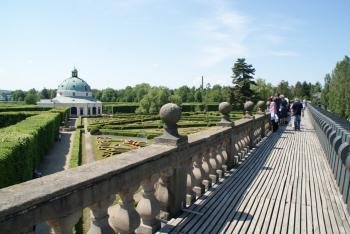
Kromeriz is one item on the long list of palaces and gardens among the WH sites. The Palace Garden is designed in the style of an English landscape garden and we enjoyed to walk around. There are ponds and a few small buildings, but most of them are in need of restoration. We skipped a guided tour of the castle, instead we visited the Pleasure Garden. The most striking buildings are the Rotunda and the long Colonnade. A staircase leads to the roof of the colonnade, from there you can beautifully admire the flower beds (photo).
The main reason for inscription of Kromeriz is that "the gardens and castle of Kromeriz are an exceptionally complete and well-preserved example of a European Baroque princely residence and its gardens." I'm not an expert in park and garden design, I just enjoy strolling there, thus maybe I can not fully appreciate the quality of this WHS. But I've seen nothing that I've not seen in other palaces and gardens before, and often more beautiful elsewhere. The market place is truly nice, but that's nothing special in a country full of beautiful town squares (I liked better those in Telc, Olomouc or Cheb). All in all, one of the less rewarding WHS on our trip to Moravia.
Keep reading 0 comments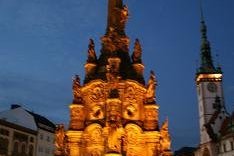
We entered the town square from the east and the first impression was stunning. The Holy Trinity Column dominates the whole square and is higher than the surrounding houses. I had already seen monuments of this kind in other Czech and Austrian cities and was also 'forewarned' by the previous reviews, nevertheless I was amazed. It is not only the sheer size that makes the column unique, but also the large number of sculptures, light-bearers and decorations. However, the appearance is harmonious and not exaggerated or disproportionate.
Of course, you can visit this site in about 10 minutes, but on closer look the first strong impression is even enhanced. We walked several times around the column and each time we noticed some more details. A table at the restaurant Caesar is perfectly suitable to admire the whole scenery of the square and the column. In the warmer months, there are tables just in front of the town hall. When visiting a town, I always like to get an impression from the bird's eye view. In Olomouc, I can recommend to climb the tower of the St Maurice Church close to the town square.
I clearly can support the recommendation of Ian Cade to spend more time in Olomouc. First, because the Holy Trinity Column is worth seeing at night. And second, because there is a real good night-life with nice restaurants and pubs in the cobbled streets of the old town and the university quarter.
A note for those who …
Keep reading 0 comments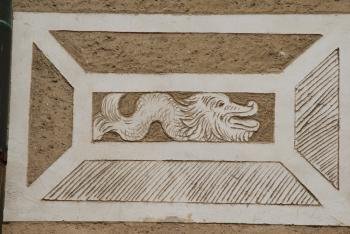
The special feature of the Renaissance castle in Litomysl is the faҫade, the complete outside is decorated with thousands of rectangular sgraffiti. The images are different from each other - fruits, animals, people, leaves - and we had great fun identifying our favourites (the photo shows one of mine). The faҫade is largely uniform and only the south wing is interrupted by arcades at the top floor. The courtyard has three-storey arcades at three sides and on the northern wall are large sgraffiti depicting ancient and biblical scenes.
At the time of our visit the area between the castle and the outbuildings was inaccessible due to construction works (also the nearby cathedral). But as we stood at the fence and tried to view the sgraffiti decorations, a construction engineer became aware of us. We told him that we came 500 km from Austria to visit the castle. Then he allowed us to go in and we could view the castle from all sides.
Sure, Litomysl is just one among many castles on the WH list, but I liked its unusual exterior: the sgraffiti, the Renaissance gables and the arcades in the courtyard.
Keep reading 0 comments
I'm not sure if my thoughts about Vigan can be included here because as much as I would like to but I have never been to this quaint "old world charm" town of the North. Although I have been to Taal Batangas and Pagsanjan in our country and Saint Augustine in Florida before which are all old colonial towns comparable to Vigan, unfortunately I have never had a chance to visit Vigan. My views about it are based on stories I got from my eldest sister who lived in up there for some years ( in the 1980's )and she even learned some Ilocano enough to understand and speak the dialect. I also have admired countless photos and read many articles and personal reviews of those who had the opportunity to see and experience Vigan. I believe Filipinos from all over should be aware and understand the priceless value of our only UNESCO World Heritage City in the Philippines because when we do regard it as such, it contributes to a strong sense of national identity and pride. Vigan may not be as spectacular as other well-preserved Spanish colonial towns found in Latin America but we must recognize that it is the only one of its kind in the entire country and perhaps in the whole of Asia. Some say that it is not Hispanic enough like those in Spain, others think it is in need of a major "facelift" or something but Vigan is unique and special as it …
Keep reading 0 comments
I too only learned of Chiloé through the UNESCO website. On a recent trip to Chile a friend and me visited as many of the churches as we could while based in the beautiful "city" of Ancud. The churches' designs are surprisingly sophisticated and beautiful. These things were built with love and care. You should go.
Important: as with most UNESCO sites: pay attention to the area surrounding it - they make the best part of the trip! Chilotas* were friendly and their food delicious (try the traditional Curanto!) and their culture rich in myths and legends; some of them downright diabolical. I found it odd, but I realized that any area that has such a huge religious presence begets a reaction. This, however, I only found in the booklets with traditional myths and stories that you'll see in every park.
*Initially "locals" seemed a tad unfriendly and dry (although not rude) until we started meeting native Chilotas who complained that these people are from other regions and give Chilotas a bad name.
Keep reading 0 comments
Nancy is lovely well kept and well preserved/restored. The Stanislas place is magnificent, there are at least 4 old city gates kept and as whole, the town inside the city ring seems to be intact and there are several magnificent houses outside too.
In Nancy, the trend with restaurants moving out on streets and places in the summer is obvious. Almost impossible to take good photos at some objects because you have "umbrellas" and you are also disturbing the guests when looking at photo angles. (Not especially for Nancy but very obvious at Stanislas Place.)
Keep reading 0 comments
I visited the Roman Museum in Aalen which is east of Stuttgart along B29 road. It is a museum built at the site of a roman cavalry fort along the Limes. Actual ruins of the fort outside. Several other places along the Limes i identified and preserved or rebuilt. There is also a Trail along at least parts of the Limes in Germany, look for "Limeswanderweg" in your search programme.
As Limes mainly was built of wood, it is not likely much could survive up to now. They have rebuilt tower for guardians some 10 km east of Aalen and in the same areas are some other sites to look at.
Keep reading 0 comments
As Hildesheim was destroyed by bombing in late March 1945 the town generally still suffers from that. At the world heritage site, there are big reconstruction works going on(2012) and is not tourist friendly. Planned to end 2015, so i recommend to wait until 2016 for a visit.
Don't miss to walk the "Kulturweg auf den Rosenroute" which leads you through the rest of what is interesting in Hildesheim.
(Don't forget that the Fagus Factory also are in the area, the same "Landkreis".)
Keep reading 0 comments
I have just returned from Rapanui..what an awesome experience. Their second language is Spanish. My command of the Spanish language is minimal to zero, however, I spoke Maori to the locals at the church and they were so excited as they could understand me. I said "Kia ora" One elder replied, "He Maori keo no Aotearoa?" I said "ae" I said Kei hea ta kotou Museum? the elder said "Haere koe i runga i te ara...ka huri pera, 'Indicating with his hand. "a ka Huri pera" On his instructions I found their museum.
Love their history.
Keep reading 0 comments
I started my visit to Hiraizumi with a smile on my face after the friendly welcome at Hiraizumi railway station: the seats are heated at the public toilets, there are coin lockers to get rid of any unnecessary luggage and there is the tourist information which hands out all kinds of folders and maps in English. I needed it after having been on a crowded train from Tokyo sandwiched between a fat older man and a sleeping salaryman.
And then I headed off into town – a very prosperous-looking town that is, just as Frederik noticed below. It’s about a 10-minute walk to the first of the 5 inscribed locations: Motsuji Temple. This is mainly known for its garden, a large landscape garden centered around a lake. I was blessed by great weather, which added to the fine composition. I also loved the building with the thatched roof at Motsu-ji.
I had read in the AB evaluation that “visual links between sites are compromised”. It sounded like overreacting to me to lament about electricity poles, but I was annoyed also when one of those kept showing up in my photos of Kanjizaiô-in Ato. This is a smaller pond, close to Motsu temple. After visiting the world heritage center, which has some interesting displays, I climbed up to Mount Kinkei. This “sacred mountain” fortunately isn’t even 100m high. There’s not a lot to see, which is also the case at Muryôkô-in Ato: an archeological field on the other side …
Keep reading 0 comments
In anticipation of the 2013 nomination of Mount Fuji, I had been looking for an “easy way” to see this site without having to climb the mountain itself. From the limited information available on the UNESCO website, I gathered that the shrines Fujisan Hongû Sengen Taisha (in Fujinomiya) and Kitaguchi Hongû Fuji Sengen Jinja (in Fujiyoshida) are the most tangible parts.
I was arriving in the area from the south, and then Fujinomiya is the most obvious choice. Fortunately, I had copied down from Wikitravel the information about how to get to the shrine – although it is within a 10-minute walk from the train station, there’s no signage. While getting there, I was looking and looking to see if I could see Mt. Fuji. But it stayed hidden behind the clouds. I thought I had seen a glimpse of a snowcovered peak from the train, but that could have been clouded as well. It is difficult trying to see something that should be there somewhere but is not visible at all. I even became unsure about in which direction I had to look.
So I had to console myself by visiting the shrine, which was erected here already in the 9th century. It is dedicated to the spirit (kami) Konohanasakuya-hime, who is believed to keep Fuji from erupting. It was a place where pilgrims came to purify themselves in water before starting the climb. Compared to the many other Shinto shrines that I have visited the last …
Keep reading 0 commentsAnonymous
Towns and Landscape of Taal Volcano and its Calder
Towns and Landscape of Taal Volcano and its Calder (On tentative list)
I practically wake up every morning at the sight of the world's smallest active volcano at my hotel room which is perched at almost 2,672 feet above sea level. Taal Volcano is situated on an island in the middle of the lake and on an island (quite a mouthful but truthfully so). All year long, I wonder with trepidation if the volcano will ever spew out its angry lava and create an ugly chaos and destruction to its serene and beautiful ienviron. I marvel everyday at how an explosion could produce a wondrous sight, no wonder millions of visitors trek on horse guided tours to the crater or just trek up to the highlands to chill at one of the hotels. Taal volcano and the some areas of Batangas have become so popular because of its almost perfect climate, awesome picture book scenery and it's proximity to Manila city. Unfortunately, too, with Baguio being overcrowded and polluted, Tagaytay and Batangas has become an alternative and viable tourism and commercial hub. Throngs of real estate developers have joined the band wagon into developing exclusive, gated communities for the middle class and the wealthy families who want a second home and/or a vacation/retirement place. Five years ago there were maybe a few subdivisions where I'm situated. Today that has multiplied by at least ten times over those years. I just wish they don't make the mistake they did with Baguio.
Keep reading 0 comments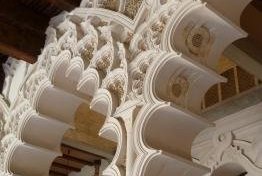
The three parts of this site located in central Zaragoza provided me with a great weekend break in yet another lively Spanish city.
I was particularly impressed with the Aljafería palace, after not expecting much it turned out to be pretty impressive. From the outside it looks like a rather austere fort, however as other reviewers have stated the interior courtyard is rather magnificent, looking like a smaller version of the Alhambra. The bright sunshine trickling water and cooling shade certainly made it a wonderful place to spend a slow Sunday morning. The walk back to the centre led me past San Pablo church, which has a rather large tower and pretty dazzling altarpiece.
Central Zaragoza turned out to be a rather impressive place, the main square is bounded by the massive Basilica of Our Lady of the Pillar which is well worth a visit to see its over the top baroque interior, and the views from the tower and bridges behind are distinct highlights of the city. When I visited the square was the site of protests about the economic problems facing Spain at the time. It gave the city a rather distinct atmosphere as well as giving me a few more people to talk to.
At the southern end of the square is the third part of the inscription, le Seo cathedral. As Assif states below, the Mudejar aspects are mostly viewable from the exterior, however the interior is well worth an exploration, again the altarpiece is rather …
Keep reading 0 comments
This site really looks genuine from medivial times. Incredible that they have been able to restore it looking so old and genuine. But the trick was of course to "abandon" the fortified town and build a new one below which could handle all the new needs state and people had.
Fortified Carcassonne really gives the scene for medivial dreams.
Keep reading 0 commentsBernard Joseph Esposo Guerrero
Rice Terraces of the Philippine Cordilleras
Rice Terraces of the Philippine Cordilleras (Inscribed)
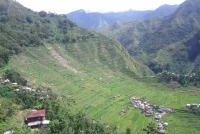
I just recently came from a trip in Ifugao. I was lucky enough to have been guided by a British friend of mine who owns an inn in Uhaj (overseeing the Hungduan Rice Terraces - WHS, which is largely regarded as the first and oldest of the rice terraces clusters in the area). I was able to visit the rice terraces in Banaue, namely Batad and Bangaan in a day -- these two clusters share the same route so maximizing the opportunity to see 2 WHS clusters in one go is a give away. Batad Rice Terraces gave me the impression of might and boldness. Among the 5 clusters inscribed as WHSites, Batad probably holds the steepest terraces (from a distance, it practically looks like a cliff). It's ampitheatre-like landscape is stunning. Going there requires some time and strength as the traveling would consume about 2.5hours, including trekking to the site. On the way back to Banaue town proper, we made a quick visit to Bangaan. Bangaan, on the other hand, is humble and unpretentious. A part of me, in fact, is convinced that Bangaan has a better character than Batad and Hungduan given the landscape and the topography it is located in. Bangaan is a colorful site as with its varying shades of green and brown fields; its small village is also intact in the middle. By and large, the rice terraces of the Philippine Cordilleras are truly amazing and are among the best cultural landscapes there are to …
Keep reading 0 comments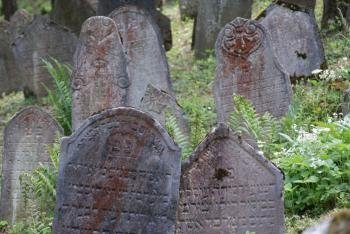
The Jewish Quarter of Trebic got its inscription mainly because it is one of the most important and well-preserved Jewish quarters in Europe. The inclusion of the St Procopius Basilica illustrates the coexistence of Christian and Jewish cultures over the centuries. I agree with the previous reviewers that the inscription is justified and also that there is not much to see from a simple tourist point of view. A visit of the basilica is worthwhile though, in particular because of the beautiful Romanesque vault in the crypt. The "guided tour" turned out to be a two-sided text-sheet and we could visit the basilica accompanied by a guide. However, the guide answered all our questions and we could take photos, although that's actually not allowed.
The (formerly) Jewish Quarter is located at the foot of the basilica, on the river bank opposite to the Christian town centre. Most houses have been renovated and are well preserved, as the buildings at the entrance of the quarter, the former town hall and the two synagogues. Others, like the poor-house, are still in bad condition. In particular the Rear Synagogue is worth a visit, the thick walls and pillars are striking. The interior is decorated with wall paintings from the 18th Century. A special feature is the women's gallery in the upper part, that could only be reached by a staircase in an adjacent building.
For me, the best part of the site was the Jewish cemetery (photo). On the way uphill to the …
Keep reading 0 comments
Kamakura is up for discussion at the 2013 WHC, and I wonder if they will make the cut. Especially since Hiraizumi had such a hard time getting in recently, a site that with 'Buddhist Pure Land' eventually found its OUV. Kamakura is a better known site than Hiraizumi, mostly because it is close enough to Tokyo for a day trip (trains take less than an hour) and also for the 'Kamakura period' (1185-1333) when it was the most important city in Japan.
The nomination is called "Kamakura, Home of the Samurai". Its originality lies in the creation of the samurai society, that was to rule Japan until the 19th century. The core zone includes shrines, temples, residences, passes and Wakaenoshima port.
I visited it for a full day, walking from temple to temple. This isn't nearly as pleasant as in Hiraizumi - Kamakura suffers from a lot of traffic congestion. The sights are scattered around town, some are kilometres away - which could lead to some integrity issues when the core zone of the site is looked at. Most of the time you have to walk by the side of the road, without a real pavement. Signage is also sparsely provided. Fortunately I had picked up a map in English at the tourist information, so I knew where I had to look. Beforehand I had written down the names of the most praised temples, which proved to be a good idea since the map features no less than 61 temples …
Keep reading 0 comments
This is really a fantastic site not only for WH collectors, but for anyone who enjoys travelling by train and admiring scenic landscapes. After visiting the WH-listed convent at Müstair, I got on the Bernina line at Pontresina (from Müstair, take the bus to Zernez and continue by train) and took a southbound train to Tirano, just across the border in Italy. Tirano is quite a pretty town, with a famous pilgrimage church and the unique sight of a train passing right through the streets and squares. The next day, I took the same route back and continued until St. Moritz, where I changed into the Albula Train to Chur (the WH part only stretches to Thusis, but trains continue without the need to change). The lines were inscribed as a masterpiece of engineering, and rightly so. There is an endless line of bridges, tunnels, and viaducts, and the Bernina line is one of the steepest railway lines in the world, and one of the few that crosses the Alps not through a tunnel, but goes over a pass (at Ospizio Bernina, which is the highest point of the line at 2,250 metres). Technical features aside, the lines pass through a sequence of varied and beautiful landscapes (including a glacial lake that was still covered with ice in late May) and through German-, Romansh- and Italian-speaking regions, which makes for interesting linguistic diversity. Technically speaking, the Rhaetian Railway is a network covering all railway lines in the Canton of Grisons …
Keep reading 0 commentsHubert
Pilgrimage Church of St. John of Nepomuk
Pilgrimage Church of St. John of Nepomuk (Inscribed)
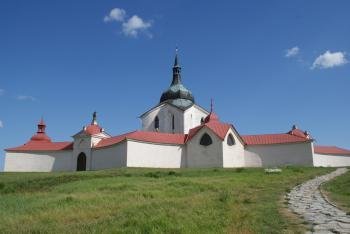
The Pilgrimage Church of St. John of Nepomuk is located on the top of a green hill (Zelena Hora) near the town of Zdar nad Sazavou. The complex consists of the central church with a ground plan in the form of a 5-pointed star and the surrounding cloister in the form of a 10-pointed star. It is no wonder that most of the photos that can be found in the Web show the church from the bird's eye view. But not only the geometry of the ground plan is unusual. Also the architectural style with the combination of Gothic and Baroque elements is exceptional. As mentioned by other reviewers, the symbolism of the number '5' plays a major role and it is fun to look for the '5' everywhere inside and outside.
The church itself is rather small and it does not take long time to visit the interior. There is little decoration and ornament in the church, but because of the five-sided geometry there is only little shadow, the interior is bright, and the sun generated nice light effects through the stained glass windows.
All in all, this WHS can be visited in less than an hour. That we've spent a fair bit more time there was mainly due to the beautiful weather. The bright blue sky in combination with the white of the walls, the red of the roofs, and the green grass around gave the whole scenery a very special charm. Such circumstances often contribute significantly to …
Keep reading 0 comments